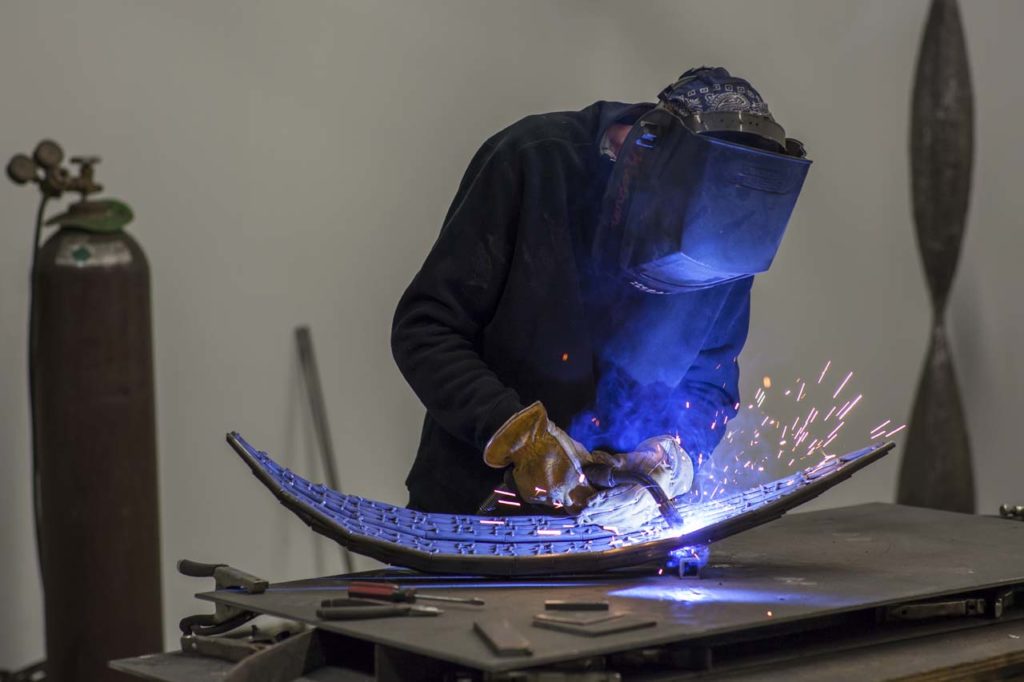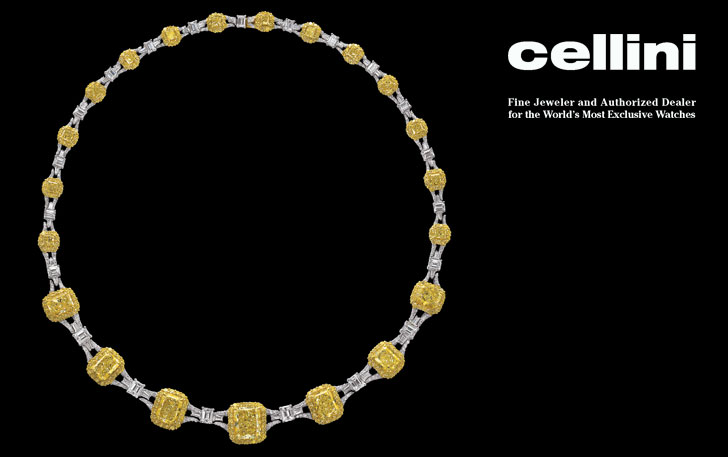A JERSEY CITY SCULPTOR, WHO FINDS WONDER IN ULTRA DURABLE MATERIALS, EXPLAINS HIS CREATIVE PROCESS
BY GILDA ROGERS
Just as sculptor Robert Koch was searching online for a public art project, the Harborside Mack Cali office building in Jersey City was looking for a sculptor to create one.
As it turned out, Koch was a natural for the high profile commission, prevailing among a long list of talented competitors. So, in 2017, he installed a series of striking metal spheres from the building’s ceiling a complicated work that hangs at varying levels in the atrium, with a view of the Manhattan skyline an enhancing backdrop.

Koch views his sojourn from everyday worker bee (albeit an artistic one) to an artist/activist as a privilege, and actually an apt depiction of who he is.
“When I’m not in the studio, I’m at a protest,” said the sculptor, who lives in the Powerhouse Arts District in downtown Jersey City, where 23 artists recently gathered at the ART150 collective space to celebrate and share their work in a public exhibition.
Koch’s work emphasizes at once the fluidity and rigidity of metal a duality captured with elegance and grace, and one on display in the public arts exhibit he created for Atlanti Care’s “Healing Arts” showcase at the Egg Harbor hospital facility. He worked on the piece for four months, seven days a week.
“What I like about metal, in part, is the permanence of it,” the artist observed, adding that he believes he was destined to be a sculptor, having spent years as a “successful” potter, but feeling unfilled in the endeavor.
“The money was good,” said Koch. After selling his wares at festivals and art shows nationwide, he would, “come home with a lot of empty boxes,” but knew something was missing. Today, he asserts that if you put the work of Romanian sculptor Constantine Brancusi (who lived from 1876 to 1957 and is considered a pioneer of modernism) into a blender with that of Italian “Sound Art” sculptor and modern furniture designer Harry Bertoia (1915-1978), his work is what you get.
Koch didn’t have a clue, as a seven year old growing up in Bally, Pennsylvania in the late 1960s, that his fate had already been sealed; his grand parents’ home was a block away from Bertoia’s studio. “[Bertoia’s] work was everywhere in the doctor’s office, in the library, and I would see him working,” Koch said, not realizing at the time that he’d glimpsed his future. Renowned as creator of the Art Deco “Diamond” chair, Bertoia courted controversy with his 1954 “Textured Screen” installation, which was promptly removed from a Dallas, Texas library after the $8,500 work was referred to as “junk” by the mayor.
In 2000, Koch enrolled in a metal sculpting class at the University of the Arts in Philadelphia. It was in this setting where he discovered his artistic niche, made plain today by Koch’s homage to Bertoia’s “Textured Screen” his own “Floating Squares” creation. “The materials are different, but, yes, I was strongly influenced by that,” said the artist.
Earlier this year, Koch was putting finishing touches on a collection of 12 pieces, which he described as a cross section of his work, for the OTA Contemporary Art Gallery in Santa Fe, New Mexico, for a show that opened on May 10.
Of his preference for these strong yet pliable materials, he explained that, “You weld two pieces [of metal] together; it is tactile in texture, and there’s no limitation for size. Unlike other works of art that may fade or wither away, metal remains, and oxidation becomes yet another defining feature. Every time I finish a piece and it’s mounted on its base, it’s gratifying.”
Robert Koch
robertkochstudios.com
